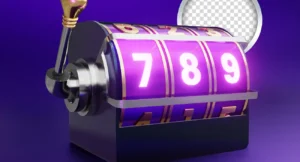
Poker is a captivating dance of skill, psychology, and probability. While luck dictates short-term results, it is strategy that determines long-term profitability. The difference between a casual player and a consistent winner isn’t the cards they are dealt, but the decisions they make with them.
Moving beyond the basic rules requires a deep understanding of fundamental strategic concepts. These principles form the foundation upon which all advanced poker theory is built. Whether you’re grinding online micro-stakes or sitting down at a live tournament, mastering these ten core strategies will dramatically improve your win rate and transform how you see the game.
This guide breaks down the ten most critical poker strategies that every player, from dedicated beginners to seasoned amateurs, needs to know and implement.
1. The Power of Tight-Aggressive (TAG) Play
The Tight-Aggressive (TAG) style is widely regarded as the most effective and profitable strategy for most players, especially in lower and mid-stakes games.
- Tight: This refers to your starting hand selection. A TAG player is highly selective, only choosing to enter pots with strong, premium hands. They avoid the temptation to play marginal hands from poor positions, which saves them money in the long run.
- Aggressive: This refers to your betting style. When a TAG player decides to play a hand, they do so with conviction. They are the ones raising and re-raising, not just calling. Aggression puts constant pressure on opponents, forcing them to make difficult decisions.
Why it works: By playing few hands, you project a strong table image. When you do bet, opponents are more likely to give you credit for a powerful hand. This aggression allows you to win pots in two ways: by having the best hand at showdown, or by making your opponents fold before showdown.
2. Position: Your Strategic Advantage
In poker, position is power. Your seat relative to the dealer button determines the order in which you act throughout a hand. Acting last is a monumental advantage.
- Late Position ( dealer Button, Cutoff, Hijack): You get to see how every other player acts before you make your decision. This treasure trove of information allows you to play more hands profitably, control the size of the pot, and bluff more effectively.
- Early Position (Under the Gun, +1, +2): You must act first on every betting round with no information. This is a significant disadvantage, so your starting hand requirements should be extremely strict.
The Strategy: Adjust your hand range based on your position. Widen your range in late position where you have an informational advantage, and tighten it significantly in early position where you are vulnerable.
3. Mastering Hand Selection with Starting Hand Charts
You can’t win a pot before the flop, but you can certainly lose one. disciplined hand selection is the first step to winning poker. While memorizing rigid charts isn’t the end goal, understanding which hands have the most potential is crucial.
- Premium Hands: Big pocket pairs (A-A, K-K, Q-Q) and strong broadway cards (A-K, A-Q) are an easy raise from any position.
- Speculative Hands: Small to medium pocket pairs and suited connectors can be profitable in the right situations. Their value lies in their potential to flop a very strong, well-disguised hand (like a set or a straight). You generally want to play these hands from late position and preferably against multiple opponents to get the right pot odds.
The Strategy: Use a proven starting hand chart as a training tool. Over time, you’ll internalize which hands are profitable and understand the nuances of when to deviate from the chart.
4. The Art of the Continuation Bet (C-Bet)
The continuation bet is one of the most important weapons in an aggressive player’s arsenal. It is a bet made by the player who took the aggressive action (raised) pre-flop on the subsequent post-flop betting round.
Why it works: When you raise pre-flop, you represent strength (premium hands like A-A, A-K, K-K). The flop will miss your opponents most of the time. A c-bet capitalizes on this by continuing your story of strength. Often, your opponents will fold, handing you the pot immediately.
The Strategy: Your c-bet success depends on board texture and your opponent type. C-bet frequently on dry, low boards (e.g., 9-5-2 rainbow) that are unlikely to have helped your opponents. Be more cautious on wet, coordinated boards (e.g., J-10-9 with two hearts) that likely hit your opponents’ calling ranges.
5. Understanding Pot Odds and implied Odds
Poker is a game of math, and pot odds are the fundamental calculation. They are the ratio between the current size of the pot and the cost of a call you are about to make.
- Example: If there is $100 in the pot and your opponent bets $20, you are being asked to risk $20 to win $120 (the $100 pot + their $20 bet). Your pot odds are 120:20, or 6:1.
- How to Use Them: You compare these odds to the odds of you completing your drawing hand. If your chance of hitting your draw is better than 6:1, it is a mathematically profitable call in the long run.
implied Odds take this a step further by considering the amount of money you can potentially win on future betting rounds if you hit your hand. A draw might have poor immediate pot odds, but if you believe your opponent will pay you off with a large bet on the river, the call can still be correct.
6. Thinking in Ranges, Not Just Hands
Beginners try to put an opponent on a single hand. “He must have Ace-King.” Winning players think in ranges—the entire spectrum of hands an opponent could have based on their actions.
- What is a Range? It’s a collection of all possible hands a player might hold in a given situation. For example, an early-position raiser’s range is very narrow and strong (A-A, K-K, Q-Q, A-K). A button raiser’s range is much wider and can include many more speculative hands.
- How to Use It: As a hand progresses, you use each new action and community card to narrow your opponent’s range. Your goal is to figure out how your hand interacts with their entire range. Does your hand beat most of the hands in their range? Then you should bet for value. Does it beat none of them? Then you should fold.
7. Balancing Your Play and Avoiding Predictability
If you only bet when you have a strong hand and check when you are weak, observant opponents will quickly exploit you. Balancing your play means mixing up your strategy so your actions don’t reveal the strength of your hand.
- Example: Occasionally bluffing in a spot where you would normally value bet, or sometimes checking a very strong hand to trap an aggressive opponent.
- The Goal: The aim is to make your play unpredictable. You want your opponents to be unsure whether your bet represents the nuts (the best possible hand) or a complete bluff. This uncertainty makes you incredibly difficult to play against.
8. Advanced Bluffing: When and How to Pull the Trigger
Bluffing is a necessary part of poker, but it must be done strategically, not emotionally. A successful bluff has a credible story and targets the right opponent.
- Semi-Bluff: This is the most profitable type of bluff. You bet or raise with a hand that isn’t currently best but has a good chance of improving to the best hand on a future street (e.g., a flush draw or straight draw). You have two ways to win: your opponent folds, or you hit your draw.
- Pure Bluff: You bet with a hand that has little to no chance of winning at showdown. These should be used sparingly and only when the board and your opponent’s behavior suggest a high likelihood of success.
Key Factors for a Bluff: Your table image, the board texture (does it fit your represented range?), and your opponent’s profile (are they a fit-fold player who gives up easily?).
9. Meticulous Bankroll Management
Bankroll Management (BRM) isn’t a table strategy; it’s a career strategy. It is the practice of only risking a small percentage of your total poker funds in any single game to protect yourself from the inevitable downswings of variance.
- The Rule: A common guideline for cash games is to have at least 20-30 buy-ins for the stake you are playing. For example, if you play $0.50/$1 NLHE, where a buy-in is $100, you should have a bankroll of $2,000-$3,000.
- Why it’s Crucial: Even the best players in the world have losing streaks. BRM ensures that a run of bad luck doesn’t wipe you out, allowing you to play your A-game without the fear of going broke.
10. The Mental Game: Tilt Control and Focus
Your mental state is perhaps the most important “strategy” on this list. Tilt—the state of emotional frustration that leads to poor decisions—is the number one bankroll killer.
- Recognize Tilt: It can be triggered by a bad beat, a taunting opponent, or even factors outside the game. Signs include playing too many hands, chasing losses, and making aggressive plays out of anger.
- The Strategy: Develop self-awareness. The moment you feel yourself tilting, the most +EV (positive expected value) decision you can make is to walk away. Take a break, stand up, or quit for the session. Protecting your bankroll from tilt-induced losses is more important than winning back a single buy-in.
Conclusion: Synthesizing Strategy for Success
There is no single “secret” to winning at poker. Consistent success is the product of diligently applying a combination of these core strategies. It’s the synergy between them that creates a formidable player: the discipline of hand selection, the power of position, the pressure of aggression, the guidance of mathematics, and the stability of a strong mental game.
Mastering these ten strategies is a journey, not a destination. Focus on integrating one at a time into your play. Analyze your hands, review your sessions, and always strive to learn. By doing so, you will no longer be a player who hopes to get lucky cards; you will be a strategic force who makes their own luck at the table.




